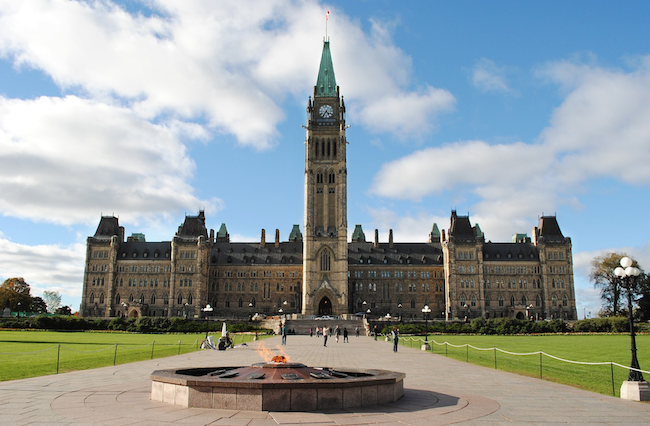On August 15th, Prime Minister Justin Trudeau visited newly-installed Governor General Mary Simon to seek a dissolution of Parliament. This was an off-cycle election call (the next election would have been scheduled for October of 2023), but it came as no surprise to anyone. The Liberal government’s intent to turn its minority status into a majority was palpable, to say the least, and the polls suggested that this would be the likely outcome. But at the time of writing, not even halfway through the campaign, the tides have turned: Conservative leader Erin O’Toole has the momentum, the New Democrats are more than holding their own, and the Liberals continue to see their popularity – and that of their leader – decline. What happens if the Liberals don’t get their majority?
They can be forgiven for assuming that O’Toole and the Conservatives were not going to pose a major challenge. After O’Toole won the leadership of the Conservative Party in August of 2020, in a competition that was carried out largely via Zoom and social media, he never seemed to spark with voters – either inside or outside of the Conservative tent. But just a week into the campaign, he released a full platform based on compassionate conservatism. He has laid out plans to address social causes like health care, addiction, climate change, job creation, and post-COVID recovery. His proposed methods generally take the form of tax incentives and cash infusions rather than federal programs, which gives the big-spending platform a conservative hue.
It is tempting – almost addictive, even – to focus too heavily on national polls throughout a campaign. All of the major polling firms release fresh data regularly and, though they don’t all tell quite the same story, they are all indicating an upward swing for the Conservatives and the NDP, at the expense of the Liberals. Of course, polls are just polls: they are temperature checks at specific moments during the campaign. They are not votes. And when we vote, it is not via national referendum but rather in specific ridings – each one with its own independent outcome. So, regardless of what the polls say, what really matters is which candidate (and, indirectly, which party) comes first in each of the 338 ridings. When Trudeau called the election, he knew which ridings he had to flip to maximize his chances at a majority, which ridings would likely go Liberal again, and which would likely not. Even if Trudeau does not do as well as was once expected, it is very possible that O’Toole and the Conservatives could win the popular vote but not win a plurality of seats. That’s exactly what happened in 2019.
But, what if Trudeau’s gamble doesn’t pay off? What if, despite the federal government’s extraordinary efforts to manage the public health and economic implications of COVID-19 over the past 18 months, the voters do not reward the Liberals as heftily as they had expected? If the results in Nova Scotia’s election are any indication, voters are looking forward rather than backward, with no sense of obligation to return the incumbent. At this point, a majority Liberal government remains possible but is looking less and less probable. A return of the minority government seems a safer bet, particularly given the Liberals’ popularity in vote-rich Ontario and its continued dominance in Atlantic Canada, but a plurality of seats for the Conservatives could certainly happen. Either of these scenarios would present its own set of difficult choices.
In 2019, when his government was reduced to a minority, Trudeau took to the podium with the sort of triumphant confidence that would suggest that he had kept his majority after all. It would be harder for him to do the same this time. After all, he made the decision to go to election when his minority government was completely secure due to the support pledged by Jagmeet Singh and the NDP. There was no risk of losing confidence; the Liberals simply wanted a majority. Anything less will seem a loss for them even if they hold onto a plurality of seats. This outcome would undermine Trudeau’s leadership and, given that it would be a third term for him as prime minister, would trigger wider and more public conversations about his eventual successor. If he does not win a plurality of seats, he still has the first right to meet the House to determine whether he holds its confidence. At that point, the ball would presumably be in Singh’s court: he’d decide whether to continue in support of the Liberals or to work with the Conservatives to defeat Trudeau and form a new government.
One thing is for certain: absolutely no one would want yet another election, so the parties will have to accept whatever outcome this one delivers and find a way forward for at least a couple of years.

